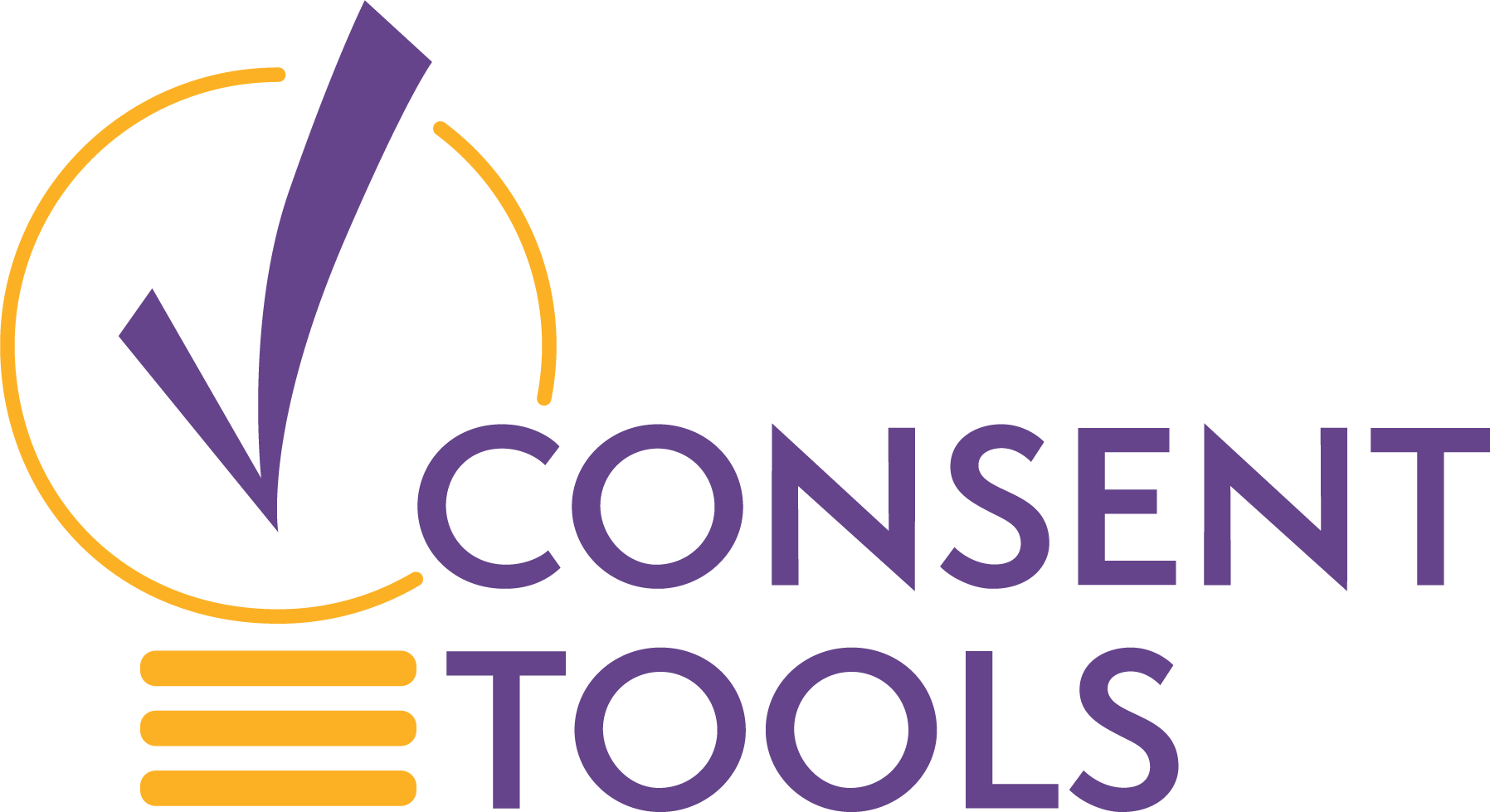Self-administered eConsent (also referred to as “app-mediated consent”) is conducted entirely by the participant without study personnel present. For example, participants might use a mobile phone consent app.
Key benefits of this type of eConsent include:
- Participants can move through the eConsent at their own pace
- Convenient for both participants and researchers (e.g., no additional visits to the clinic needed)
Evidence-Informed Practices for eConsent
Evidence-informed practices for self-administered eConsent include:
- Using plain language
- Using appropriate formatting and web design
- Assessing for understanding
See the table for how to incorporate these practices into your eConsent model.
| Evidence-Informed Practices for Informed Consent | Application to eConsent |
|---|---|
| Plain Language |
|
| Formatting and Web Design |
|
| Assess for Understanding |
|
Key Considerations
- Focus on the key information section
- Consider focusing on evidence-informed practices for the key information section of informed consent documents.
-
- This is because the key information “must be organized and presented in a way that facilitates comprehension” (45 CFR 46).
- As a result, IRBs should be more willing to allow modifications to this section.
- However, the evidence-informed practices apply to the entire informed consent document and where possible, should be used throughout.
- Keep in mind the difference between electronic and hard-copy formats
- Participants may physically process text differently on a screen than they do on paper (skimming, reading only parts of the webpage, etc.). Make sure your eConsent is formatted properly for electronic display so that participants can read and understand the consent.
Questions to ask when designing and implementing your self-administered eConsent include:
- Does my IRB recommend or require a specific eConsent vendor or app? What guidance does my IRB provide?
- How will I protect patient privacy and confidentiality? Is my eConsent HIPAA compliant?
- Does my eConsent follow evidence-informed practices for plain language, formatting, and web-based communication?
- Will various populations have access to this eConsent, including rural, minority, or elderly populations? How can I address barriers that might hinder eConsent, such as internet connectivity or device issues?
- Will participants have an opportunity to ask questions or speak with a member of the research team?
- Will participants be offered an alternative consent document (e.g., a hard copy) if they prefer?
- How will I ensure an appropriate level of cognitive friction, to avoid “click-through” without understanding?
- How will I assess for understanding of consent information?
- Can I use this eConsent with a Legally Authorized Representative (LAR)?
-
Helpful Resources
TOPIC RESOURCE BRIEF DESCRIPTION Overview of eConsent De Sutter, E., Zace, D., Boccia, S., Di Pietro, M. L., Geerts, D., Borry, P., & Huys, I. (2020). Implementation of electronic informed consent in biomedical research and stakeholders’ perspectives: Systematic review. J Med Internet Res, 22(10), e19129. PMID:33030440 This systematic review provides recommendations to guide implementation of eConsent for six domains: format; impact on understanding; acceptability; security and trust; storage; and content. Chen, C., Lee, P. I., Pain, K. J., Delgado, D., Cole, C. L., & Campion, T. R., Jr. (2020). Replacing paper informed consent with electronic informed consent for research in academic medical centers: A scoping review. AMIA Joint Summits on Translational Science, 80–88. PMID: 32477626 This review article collated existing studies of eConsent into five categories: 1) ethical, legal, and social issues, 2) user interface/user experience considerations, 3) comparing to paper consent, 4) enterprise scalability, and 5) feasibility of changes to the eConsent process. Skelton, E., Drey, N., Rutherford, M., Ayers, S., & Malamateniou, C. (2020). Electronic consenting for conducting research remotely: A review of current practice and key recommendations for using e-consenting. Int J Med Inform, 143, 104271. PMID: 32979650 This article offers practical recommendations and best practices for researchers in five primary domains: 1) accessibility and user-friendliness of eConsent; 2) user engagement and comprehension; 3) customizability to participant preferences and demographics; 4) data security; and 5) impact on research teams. Ethical, Practical, and Design Concerns Lawrence, C. E., Dunkel, L., McEver, M., Israel, T., Taylor, R., Chiriboga, G., . . . Harris, P. A. (2020). A REDCap-based model for electronic consent (eConsent): Moving toward a more personalized consent. J Clin Transl Sci, 4(4), 345-353. PMID: 33244416 In this study, the authors provide practical descriptions of key features to consider when designing and implementing an eConsent model, such as in-line descriptive popups and secure document storage. Wilbanks J. (2018). Design issues in e-consent. The Journal of law, medicine & ethics: a journal of the American Society of Law, Medicine & Ethics, 46(1), 110–118. PMID: 30057442 In this article, Wilbanks raises key eConsent design issues, such as “cognitive friction” and appropriate use of iconography, and discusses their ethical implications. Participant Experiences and Empirical Data Simon, C. M., Schartz, H. A., Rosenthal, G. E., Eisenstein, E. L., & Klein, D. W. (2018). Perspectives on electronic informed consent from patients underrepresented in research in the United States: A focus group study. J Empir Res Hum Res Ethics, 13(4), 338-348. PMID: 29790410 In this study, the authors conducted focus groups with underrepresented patients in research to understand their preferences for a paper versus eConsent. Overall, participants found eConsent easier to use, more interesting, and better for understanding. Some minority and rural participants raised concerns, and these population-specific issues are important to consider when designing a study. Vanaken, H. I., & Masand, S. N. (2019). Awareness and Collaboration Across Stakeholder Groups Important for eConsent Achieving Value-Driven Adoption. Ther Innov Regul Sci, 53(6), 724-735. PMID: 31319717 This study sought to better understand the perceptions, experiences, and concerns of various stakeholder groups regarding eConsent. Generally, stakeholders from all groups saw benefits of using eConsent to deliver study information, including reduction in administrative burden and the potential for reduction of participant burden by reducing the number of participant visits. Web-Based Resources Sage Bionetworks Toolkit Practical guide with tips and examples for designing and implementing your eConsent. TransCelerate BioPharma, Inc. 2017 Practical design and implementation guide for various eConsent models. HHS Electronic Informed Consent Guidance Q&A on eConsent from the Office of Human Research Protections.
ConsentTools | 4523 Clayton Avenue | Campus Box 8005 | St. Louis, MO | 63110-1093
ConsentTools@wustl.edu

ConsentTools © 2024 by Bioethics Research Center, Washington University is licensed under CC BY-NC-SA 4.0. To view a copy of this license, visit http://creativecommons.org/licenses/by-nc-sa/4.0/
